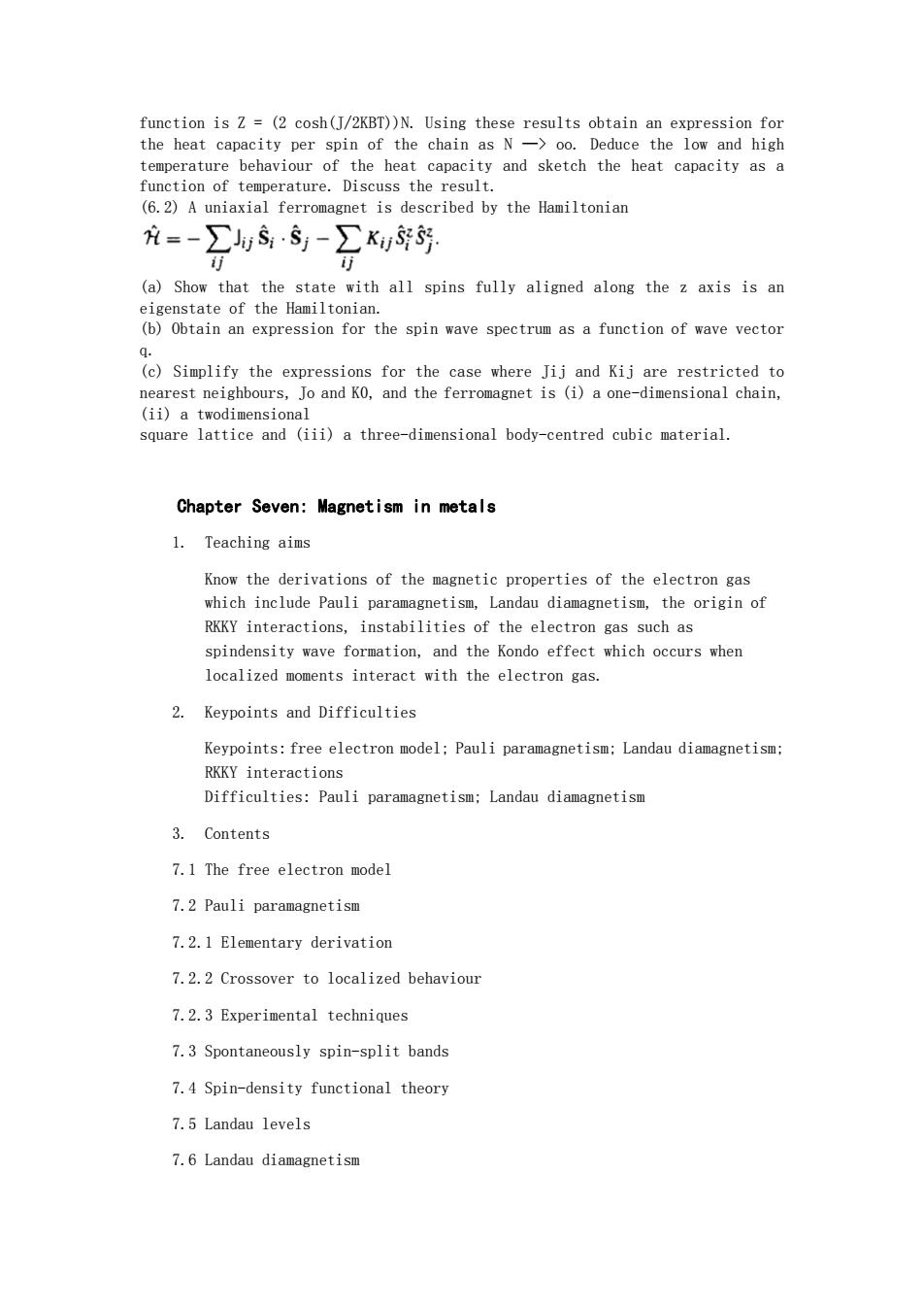正在加载图片...

function is Z=(2 cosh(J/2KBT))N.Using these results obtain an expression for the heat capacity per spin of the chain as N->oo.Deduce the low and high temperature behaviour of the heat capacity and sketch the heat capacity as a H=-与S:·Sj-KwS好S9 (a)Show that the state with all spins fully aligned along the z axis is an (c)Simplify the Iii and Kii nsional chain. (ii)a twodimensional square lattice and (iii)a three-dimensional body-centred cubic material. Chapter Seven:Magnetism in metals 1.Teaching aims Know the derivations of the magnetic properties of the electron gas which include Pauli paramagnetism,Landau diamagnetism,the origin of RKKY interactions,instabilities of the elec as such as spindensity wave formation,and the Kondo effect which occurs when localized moments interact with the electron gas. 2.Keypoints and Difficulties Keypoints:free electron model:Pauli paramagnetism:Landau diamagnetism RKKY interactions Difficulties:Pauli paramagnetism:Landau diamagnetism 3.Contents 7.1 The free electron model 7.2 Pauli paramagnetism 7.2.1 Elementary derivation 7.2.2 Crossover to localized behaviour 7.2.3 Experimental techniques 7.3 Spontaneously spin-split bands 7.4 Spin-density functional theory 7.5 Landau levels 7.6 Landau diamagnetis function is Z = (2 cosh(J/2KBT))N. Using these results obtain an expression for the heat capacity per spin of the chain as N —> oo. Deduce the low and high temperature behaviour of the heat capacity and sketch the heat capacity as a function of temperature. Discuss the result. (6.2) A uniaxial ferromagnet is described by the Hamiltonian (a) Show that the state with all spins fully aligned along the z axis is an eigenstate of the Hamiltonian. (b) Obtain an expression for the spin wave spectrum as a function of wave vector q. (c) Simplify the expressions for the case where Jij and Kij are restricted to nearest neighbours, Jo and K0, and the ferromagnet is (i) a one-dimensional chain, (ii) a twodimensional square lattice and (iii) a three-dimensional body-centred cubic material. Chapter Seven: Magnetism in metals 1. Teaching aims Know the derivations of the magnetic properties of the electron gas which include Pauli paramagnetism, Landau diamagnetism, the origin of RKKY interactions, instabilities of the electron gas such as spindensity wave formation, and the Kondo effect which occurs when localized moments interact with the electron gas. 2. Keypoints and Difficulties Keypoints: free electron model; Pauli paramagnetism; Landau diamagnetism; RKKY interactions Difficulties: Pauli paramagnetism; Landau diamagnetism 3. Contents 7.1 The free electron model 7.2 Pauli paramagnetism 7.2.1 Elementary derivation 7.2.2 Crossover to localized behaviour 7.2.3 Experimental techniques 7.3 Spontaneously spin-split bands 7.4 Spin-density functional theory 7.5 Landau levels 7.6 Landau diamagnetism